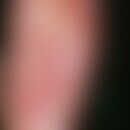DefinitionThis section has been translated automatically.
The FZD6 gene (FZD6 stands for Frizzled-6) is a protein-coding gene localized to Chr 8: 103.3 in humans. It encodes the protein of the same name.
General informationThis section has been translated automatically.
Members of the "Frizzled" gene family encode 7-transmembrane domain proteins that are receptors for WNT signaling proteins. The FZD6 protein encoded by this gene contains a signal peptide, a cysteine-rich domain in the N-terminal extracellular region, and 7 transmembrane domains. However, unlike many other members of the FZD family, FDZ6 does not contain a C-terminal PDZ domain binding motif. TheFDZ6 protein is thought to be the receptor for WNT4.
Frizzled-6 protein is active in many tissues. However, during early development, it plays a critical role in nail growth and development, particularly in the attachment of the nail to the nail bed. It is likely that Frizzled-6 is also involved in hair growth.
See also Congenital non-syndromic nail changes.
Clinical pictureThis section has been translated automatically.
n 2011, Fröjmark et al. identified mutations in the FZD6 gene as the cause of autosomal recessive nail dysplasia (Fröjmark AS et al. 2011; NDNC10, OMIM 614157). They reported two consanguineous Pakistani families with 11 members affected by isolated nail dysplasia (Fröjmark AS et al. 2011).
According to this study, the homozygous FZD6 mutations (p.Glu584* and p.Arg511Cys) lead to dysfunction/loss of FZD6 followed by dysregulation of several FZD6-mediated signaling pathways required for proper nail formation and regeneration. To date, seven different mutations in eleven families have been reported, including two missense, two nonsense, two frameshift, and one compound heterozygous mutation. Five of these seven mutations are located in the C-terminus, suggesting that the C-terminal region may be a mutation hotspot
Saygı C et al. 2019 reported a patient with congenital 20-nail dysplasia. She had thickened, hard, shiny, hyperplastic, and hyperpigmented claw-like nails on her hands and feet. All nails on all four extremities were affected. She lost her nails at intervals. The newly grown nails were also affected. They became hard, thickened, and clawed over time. Pedigree analysis indicated autosomal recessive inheritance. After birth, the patient was diagnosed with uveitis and ocular tuberculosis without pulmonary involvement.
LiteratureThis section has been translated automatically.
- Bafico A et al. (1999) Interaction of frizzled related protein (FRP) with Wnt ligands and the frizzled receptor suggests alternative mechanisms for FRP inhibition of Wnt signaling. The Journal of Biological Chemistry 274: 16180-16187.
- Cong F et al.(2004) Wnt signals across the plasma membrane to activate the beta-catenin pathway by forming oligomers containing its receptors, frizzled and LRP. Development 131:5103-5115.
- Fröjmark AS et al (2011) Mutations in frizzled 6 cause isolated autosomal-recessive nail dysplasia. Am J Hum Genet 88:852-860.
- Golan T et al (2004) The human Frizzled 6 (HFz6) acts as a negative regulator of the canonical Wnt. beta-catenin signaling cascade". The Journal of Biological Chemistry. 279: 14879-1488.
- Guo N et al. (2004) Frizzled 6 controls hair patterning in mice. Proceedings of the National Academy of Sciences. 101: 9277-9281.
- Khan S et al (2015) Genetics of human isolated hereditary nail disorders. Br J Dermatol 173:922-929.
- Lyons JP et al (2004) Wnt-4 activates the canonical beta-catenin-mediated Wnt pathway and binds Frizzled-6 CRD: functional implications of Wnt/beta-catenin activity in kidney epithelial cells". Experimental Cell Research 298: 369-387.
- Saygı C et al. (2019) A possible founder mutation in FZD6 gene in a Turkish family with autosomal recessive nail dysplasia. BMC Medical Genetics 20: https://doi.org/10.1186/s12881-019-0746-6.
- Tokuhara M et al (1998) Molecular cloning of human frizzled-6". Biochemical and Biophysical Research Communications. 243: 622-627



